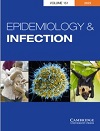Latest Publications
Extreme mortality during a historical measles outbreak on Rotuma is consistent with measles immunosuppression
 Susie Cant, G. Dennis Shanks, Matt J. Keeling and Bridget S. Penman
Susie Cant, G. Dennis Shanks, Matt J. Keeling and Bridget S. Penman
In 1911, Rotuma in Fiji was hit by a measles pidemic, which killed 13% of the island population. Detailed records show two mortality peaks, with individuals reported as dying solely from measles in the first and from measles and diarrhoea in the second. MeHere, we investigate whether the pattern of mortality on Rotuma in 1911 was a consequence of the immunosuppressive effects of measles. We use a compartmental model to simulate measles infection and immunosuppression. Whilst immunosuppressed, we assume that individuals are vulnerable to dysfunctional reactions triggered by either (i) a newly introduced infectious agent arriving at the same time as measles or (ii) microbes already present in the population in a pre-existing equilibrium state. We show that both forms of the immunosuppression model provide a plausible fit to the data and that the inclusion of immunosuppression in the model leads to more realistic estimates of measles epidemiological parameters than when immunosuppression is not included.
